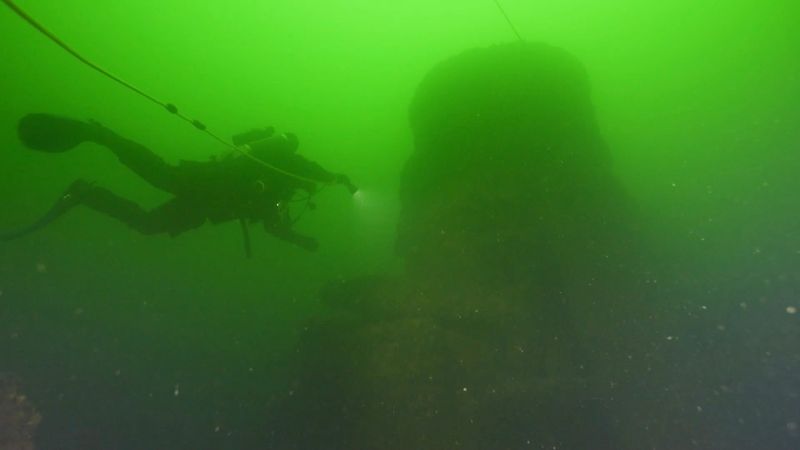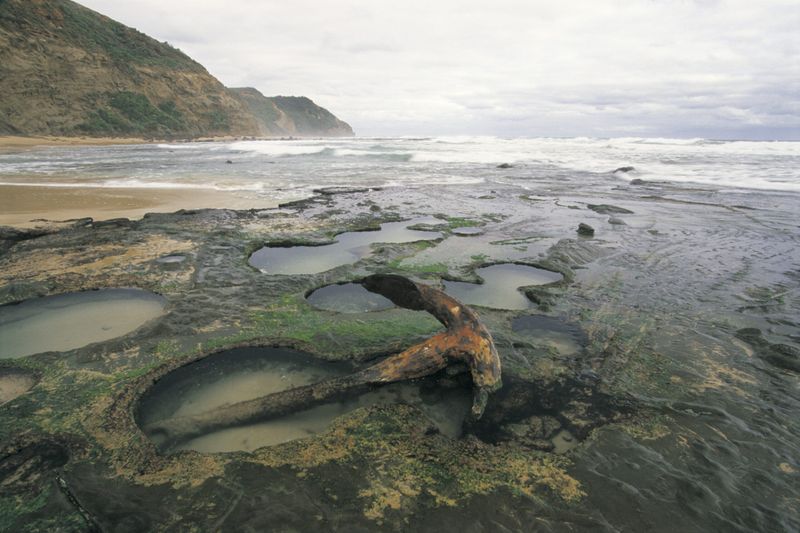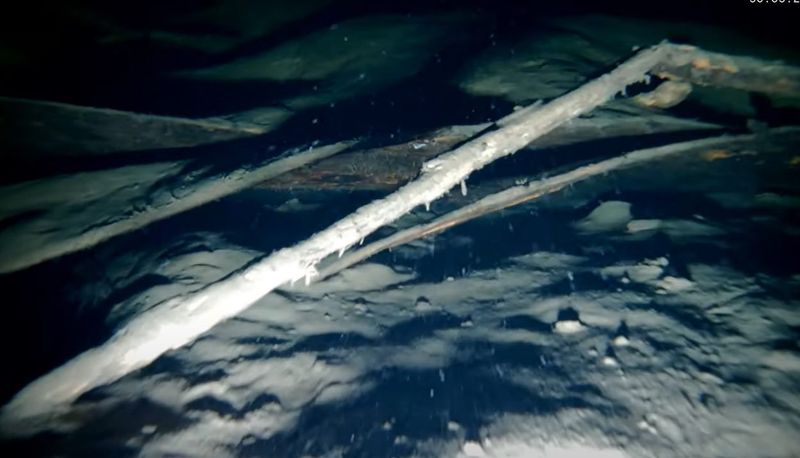Over the past two centuries, several shipwrecks initially believed to be Viking vessels have been re-examined, revealing surprising truths about their origins. Here are some notable examples:
1. Gribshunden (Griffin-Hound)
The Gribshunden, or Griffin-Hound, stirred curiosity when it was initially believed to be a Viking ship. However, this Danish warship, the flagship of King Hans of Denmark, sank in 1495.
Now recognized as one of the best-preserved late medieval ships, its story illustrates the maritime prowess of the era. Found off the coast of Ronneby, Sweden, this shipwreck offers a unique glimpse into naval warfare history.
Its preservation allows historians and archaeologists to explore late medieval ship construction and the geopolitical climate of the Scandinavian region.
2. Dalarö Wreck, Sweden
Discovered in 2003 near Dalarö, this shipwreck initially sparked whispers of Viking origins. However, further research revealed it as the Bodekull, a Swedish naval vessel built between 1659 and 1661.
This 17th-century ship showcases the intricate design and craftsmanship of the period, contrasting sharply with Viking construction techniques.
The Dalarö wreck serves as a remarkable example of how underwater discoveries can challenge preconceived notions, inviting us to reconsider historical narratives. It stands as a testament to Sweden’s rich nautical heritage and naval innovations of the time.
3. Salme Ships, Estonia
The Salme Ships, unearthed in 2008 and 2010, initially captivated imaginations as Viking ships carrying warriors. Yet, these ship burials actually predate the Viking Age, tracing back to the 8th century.
Attributed to pre-Viking Scandinavian seafarers, they offer a rare glimpse into early maritime practices and warrior culture. The discovery of warrior remains alongside the ships adds an intriguing layer to the narrative.
These findings enrich our understanding of the transition from pre-Viking to Viking Age, providing a fascinating snapshot of historical evolution.
4. Wreck 5 at Landfjärden, Sweden
Once thought to be a relic from the Viking Age, Wreck 5 at Landfjärden surprised many with its true origins. This ship wasn’t a Viking vessel at all but dates back to the 15th century, specifically between 1460 and 1480.
Its construction style, known as “carvel,” features planks laid edge-to-edge, creating a smooth hull distinct from the overlapping “clinker” style associated with Vikings.
As marine archaeologists delved deeper, the ship’s true story emerged, providing insights into the dynamic changes in shipbuilding techniques during the late medieval period.
5. Additional Shipwrecks at Landfjärden
In the waters of Landfjärden, not just one but several shipwrecks were misidentified as remnants from the Viking era. These ships, originally thought to be ancient, were actually from the 17th and 18th centuries.
Maritime archaeologists uncovered their true origin, revealing a fascinating blend of history and myth. These discoveries highlight the challenges and excitement of underwater archaeology, where every find tells its own story.
The re-evaluation of these shipwrecks underscores the ongoing development of archaeological techniques, offering fresh insights into the past.
6. Mahogany Ship, Australia
The elusive Mahogany Ship, reportedly sighted near Warrnambool in the 19th century, has sparked debates and curiosity for decades. Once thought to be a Viking vessel, its very existence remains shrouded in mystery.
Theories suggest it could be a 16th-century Portuguese caravel, hinting at early European exploration of Australia. This enigma captivates historians and treasure hunters alike, driving ongoing searches and speculation.
The Mahogany Ship symbolizes the allure of maritime mysteries, where fact and folklore intertwine, inviting us to question and explore our historical understanding.
7. Beardmore Relics, Canada
The tale of the Beardmore Relics is one of intrigue and deception. Discovered in the 1930s in Canada, these artifacts were initially hailed as evidence of Viking presence in North America. However, further investigations exposed them as a hoax.
The items, likely originating from Scandinavia, were deliberately planted at the site. This revelation highlights the challenges of archaeological authentication and the human desire for sensational discoveries.
The Beardmore Relics hoax serves as a cautionary tale, reminding us to critically assess the evidence and seek truth amid curiosity.
8. Ship Part Found in Oslofjord, Norway
Beneath a 14th-century wharf in Oslofjord, a ship fragment sparked excitement as a potential Viking find. Yet, radiocarbon dating revealed its origin closer to the late 11th century, debunking thoughts of a Viking connection.
This discovery opens a window into post-Viking maritime history, highlighting advancements in shipbuilding techniques. The fragment’s context within a bustling medieval wharf offers insights into trade and commerce of the era.
Such finds challenge and refine our historical timelines, shedding light on the evolving nature of maritime activities in Norway.
9. Storfjord Wreck, Norway
The Storfjord Wreck in Norway offers a glimpse into maritime history long thought to be from the Viking Age. Closer examination revealed it dates between the 14th and 19th centuries.
Its design, initially linked to Viking ships, reflects a blend of medieval influences. This shipwreck emphasizes the complex evolution of naval architecture over centuries.
Nestled in icy waters, it stands as a testament to Norway’s seafaring heritage. The Storfjord Wreck invites us to explore the rich tapestry of maritime history and the transition from Viking to post-Viking eras.
10. Wreck at Häringe, Sweden
Initially believed to be a Viking ship, the wreck at Häringe unfolded a different story. Detailed analysis identified it as a medieval carvel-built ship from the late Middle Ages.
This discovery sheds light on the evolution of shipbuilding techniques in northern Europe. Unlike the overlapping planks of clinker-built Viking ships, the carvel style offers a smoother hull, indicating technological progression.
Submerged in the clear waters of Häringe, this shipwreck weaves a narrative of innovation and adaptation, reminding us of the ever-evolving maritime landscape.










